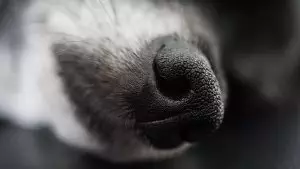Heated dog houses equipped with smart technology now provide a cozy and safe retreat for pets during cold weather, addressing traditional space heater safety concerns. These modern kennels maintain an ideal temperature through insulated materials, optional solar panel integration, and energy-efficient heating elements, making them a sustainable choice that helps reduce carbon emissions and lower utility costs. Enhanced with thermostatic regulation to prevent overheating, they are an eco-friendly option for pet owners who prioritize their pets' comfort and the environment. The design of these dog houses considers various factors such as breed, coat type, and local climate, ensuring optimal thermal efficiency. High-performance insulation materials like foam or fiberglass are used, and the orientation of the house is strategically planned to maximize sunlight and minimize weather exposure. For ongoing comfort without excess energy use, proper ventilation and double doors designed to minimize drafts are essential. Renewable energy sources like solar panels, wind turbines, or micro hydro systems can power these dog houses, aligning with environmental conservation goals and providing a comfortable living space for pets year-round. Smart thermostat technology further enhances comfort and efficiency by automatically adjusting the temperature based on pet behavior and environmental data, integrating seamlessly with smart home systems to anticipate and respond to changing conditions and schedules, ensuring a cozy environment for dogs while promoting energy conservation.
Pet owners seeking to provide a cozy refuge for their furry companions can benefit from energy-efficient heating solutions. These not only ensure comfort but also promote sustainability. This article delves into the integration of renewable energy sources, such as solar, wind, and geothermal power, into Heated Dog Houses, optimizing both pet well-being and environmental impact. We’ll explore advanced insulation materials that enhance heat retention, smart thermostat technology for automated comfort, and practical tips for designing an eco-friendly, warm retreat for pets in varied climates. Whether you’re a pet owner or an enthusiast of sustainable living, this guide offers valuable insights into the forefront of energy-efficient pet housing innovation.
Introduction to Energy-Efficient Heating Solutions for Pet Owners

Energy-efficient heating solutions are becoming increasingly important for pet owners who prioritize their animals’ comfort and well-being, especially during colder months. Traditional space heaters can be hazardous, with the risk of fire or carbon monoxide poisoning, making it crucial to explore safe alternatives. Heated dog houses, a modern take on the traditional kennel, are designed to provide a cozy environment for pets while being energy conscious. These advanced houses utilize smart technology to maintain an optimal temperature, ensuring your pet stays warm without wasting energy. They often come with insulated materials that retain heat effectively and can be supplemented with solar panels or energy-efficient heating elements. By adopting such solutions, pet owners can enjoy the assurance of their pets’ comfort while reducing their carbon footprint and minimizing utility bills. Additionally, these heated dog houses are often equipped with thermostats to regulate temperature automatically, avoiding overheating and maximizing efficiency. This not only protects your pet but also contributes to a more sustainable living environment. As awareness of the importance of energy conservation grows, these heating solutions for pets stand out as a thoughtful and responsible choice for any pet owner.
Designing a Heated Dog House with Thermal Efficiency in Mind

When designing a heated dog house with thermal efficiency as a priority, it’s crucial to consider the dog’s breed, coat type, and climate acclimatization to ensure optimal comfort and safety. Insulation plays a key role in maintaining the interior temperature; high-quality materials such as foam insulation or fiberglass should be used in the walls, roof, and floor. The orientation of the dog house can also impact its thermal performance; positioning it to receive sunlight during colder months while shielding it from wind and weather is beneficial.
Incorporating a properly sized and installed heating element, such as a thermostatically controlled heated mat or pad, will provide warmth without excessive energy use. The design should also include proper ventilation to prevent condensation and ensure air circulation, which is essential for maintaining a healthy indoor environment for the pet. Additionally, the entrance should be designed to minimize drafts yet allow for easy access. Using double doors can further enhance thermal efficiency by reducing gaps where cold air could enter. With careful planning and attention to detail, a heated dog house can offer a cozy retreat for dogs, especially in regions with harsh winters or during particularly cold snaps.
Insulation Materials for Pet Houses: Maximizing Heat Retention

When designing a heated dog house, selecting appropriate insulation materials is paramount to ensure your pet remains comfortable in various climates. High-quality insulation can significantly enhance heat retention, making the heated dog house more energy-efficient and reducing the need for frequent supplemental heating. Materials like expanded polystyrene (EPS) and polyurethane foam offer exceptional R-values, which measure thermal resistance. These materials provide a continuous barrier against the cold, reducing heat loss. Additionally, the durability of these insulants ensures they can withstand the wear and tear that comes from an active pet.
To maximize the efficiency of a heated dog house, consider incorporating reflective insulation materials. Radiant barriers, typically made of aluminum-coated foil, can be installed inside the roof panels to reflect heat back into the living space. This reflects not only the sun’s heat during warmer months but also captures and retains body heat from your pet in colder seasons. Combining these insulation techniques with a well-designed heating system tailored for pets, such as thermostatically controlled heated dog houses, can create a comfortable and safe environment for your animal companion year-round.
Renewable Energy Options for Your Heated Dog House

When considering a heated dog house, particularly one that operates with energy efficiency in mind, exploring renewable energy options is a prudent approach. Solar panels are an excellent choice for powering such a setup, harnessing the abundant sunshine to generate electricity. The initial investment in solar technology can be offset by the long-term savings on energy bills and the environmental benefits of reducing reliance on fossil fuels. Additionally, small wind turbines can be a viable option if your dog’s residence is located in an area with consistent wind flow. These turbines can supplement solar power or serve as the primary energy source, depending on local weather patterns and the power requirements of the heated dog house. For those living off-grid or in remote areas, integrating a micro hydro system can be another sustainable option if there’s a nearby water source with a suitable flow. Each of these renewable energy sources not only contributes to a greener planet but also ensures that your pet remains comfortable and warm during the colder months without depleting non-renewable resources. It’s important to assess the specific needs of your dog, the climate, and the availability of natural resources in your region to choose the most appropriate renewable energy solution for your heated dog house.
Solar-Powered Dog Houses: A Sustainable Solution for Outdoor Pets

In recent years, the integration of renewable energy sources into pet care solutions has gained traction, exemplified by the advent of solar-powered heated dog houses. These innovative structures harness the power of the sun to provide a warm and comfortable environment for outdoor pets, regardless of the weather conditions. The efficiency of these dog houses lies in their ability to collect solar energy during daylight hours, storing it in batteries for use when natural light fades. This not only ensures that pets remain at optimal temperatures but also aligns with the broader goals of sustainable living and energy conservation. The solar-powered system is designed to be low-maintenance, requiring minimal human intervention, making it an ideal solution for pet owners who prioritize both their pets’ well-being and environmental stewardship.
The design of these heated dog houses incorporates durable, weather-resistant materials to protect against the elements. The solar panels are strategically placed to maximize sun exposure, while the heating elements are carefully calculated to provide the necessary warmth for the pet’s health. Additionally, these homes often come equipped with insulation and ventilation systems to maintain a stable climate. This ensures that the interior remains cozy and safe for pets even in extreme temperatures. By choosing a solar-powered heated dog house, pet owners can significantly reduce their carbon footprint associated with traditional heating methods, contributing positively to energy conservation efforts.
Wind and Geothermal Powered Dog Houses: Exploring Alternative Energy Sources

Innovations in alternative energy sources have led to the creation of heated dog houses that are powered by wind and geothermal energy. These eco-friendly solutions offer a sustainable approach to keeping pets comfortable in various climates. Wind-powered dog houses harness kinetic energy through turbines that convert wind movement into electrical power, which then heats the interior. This technology is particularly beneficial for pet owners living in areas with consistent wind patterns, as it provides a clean and renewable way to maintain a stable body temperature for their animals.
Geothermal-powered dog houses, on the other hand, utilize the earth’s natural heat stored in the ground. Ground source heat pumps extract this thermal energy during colder months to provide warmth, while in warmer seasons, the system works in reverse to cool the interior. These heated dog houses are ideal for regions with stable geothermal activity, ensuring pets remain at optimal comfort levels regardless of external temperature fluctuations. Both wind and geothermal powered options represent a significant step forward in sustainable pet care, reducing reliance on fossil fuels and lowering the carbon pawprint associated with traditional heating methods.
Smart Thermostats and Automation in Heated Dog Houses for Optimal Comfort and Efficiency

Smart thermostats have revolutionized the way we manage energy consumption in our homes, and this innovation extends to heated dog houses as well. These intelligent devices learn from your pet’s behavior and environmental conditions to optimize temperature settings, ensuring that your furry companion remains at the perfect comfort level while conserving energy. By automatically adjusting the thermostat based on pre-set parameters, smart thermostats in heated dog houses can maintain a consistent and cozy environment for your dog, even when you’re not physically present. This not only enhances the well-being of your pet but also contributes to significant energy savings by preventing overuse or unnecessary heating.
Furthermore, integrating smart home automation systems with these heated dog houses can provide an additional layer of efficiency and convenience. These systems can be programmed to interact with various sensors and devices, adapting the temperature based on real-time weather conditions, your pet’s activity levels, or even your schedule. For instance, if a sudden cold snap is forecasted, the system can automatically activate the heating in your dog’s house well before your pet is expected outside, ensuring they are comfortable and warm upon arrival. Similarly, during milder weather, it can reduce energy consumption by minimizing the need for heating at all. The combination of smart thermostats and automation in heated dog houses represents a thoughtful approach to pet care, blending comfort with energy efficiency.
